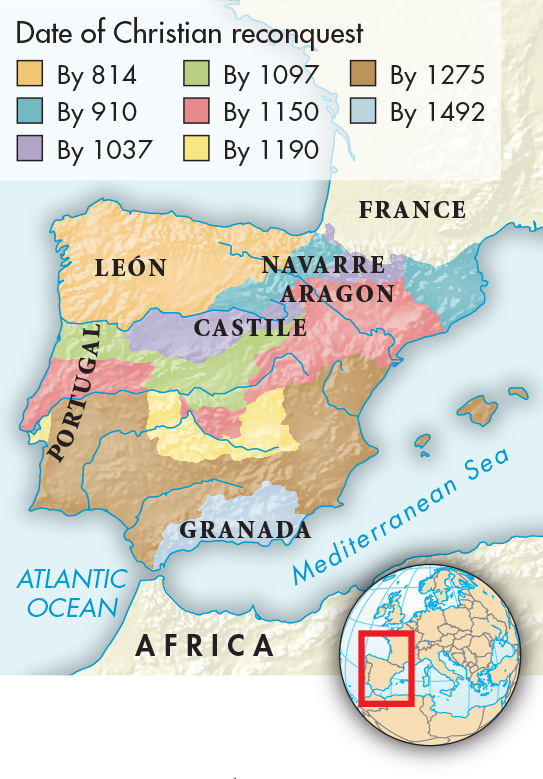A History of World Societies:
Printed Page 400
A History of World Societies Value
Edition: Printed Page 398
The Expansion of Christianity
The eleventh and twelfth centuries saw not only reforms in monasticism and the papacy but also an expansion of Christianity into Scandinavia, the Baltic lands, eastern Europe, and Spain that had profound cultural consequences. The expansion was accomplished through wars, the establishment of new bishoprics, and the vast migration of Christian colonists into non-
Christian influences entered Scandinavia and the Baltic lands primarily through the creation of dioceses (church districts headed by bishops). This took place in Denmark and Norway in the tenth and eleventh centuries, and then in Sweden and Finland. In all of these areas, Christian missionaries preached, baptized, and built churches. Royal power advanced institutional Christianity, and traditional Norse religions practiced by the Vikings were outlawed. In eastern Europe the German emperor Otto I (see “The Restoration of Order”) planted a string of dioceses along his northern and eastern frontiers, hoping to pacify the newly conquered Slavs in eastern Europe. German nobles built castles and ruthlessly crushed revolts by Slavic peoples.
The church also moved into central Europe, first into Bohemia in the tenth century and from there into Poland and Hungary in the eleventh century. In the twelfth and thirteenth centuries thousands of settlers poured into eastern Europe from the west. These new immigrants, German in descent, name, language, and law, settled in Silesia, Mecklenburg, Bohemia, Poland, Hungary, and Transylvania, where they established towns.
The Iberian Peninsula was another area of Christian expansion. In about 950 Caliph Abd al-

Fourteenth-
Spain was not the only place in Europe where “blood” became a way of understanding differences among people and a basis for discriminatory laws. When Germans moved into eastern Europe and English forces took over much of Ireland, they increasingly barred local people from access to legal courts and denied them positions in monasteries or craft guilds. They banned intermarriage between ethnic groups in an attempt to maintain ethnic purity, even though everyone was Christian. As Europeans later came into contact with people from Africa and Asia, and particularly as they developed colonial empires there, these notions of blood also became a way of conceptualizing racial categories.